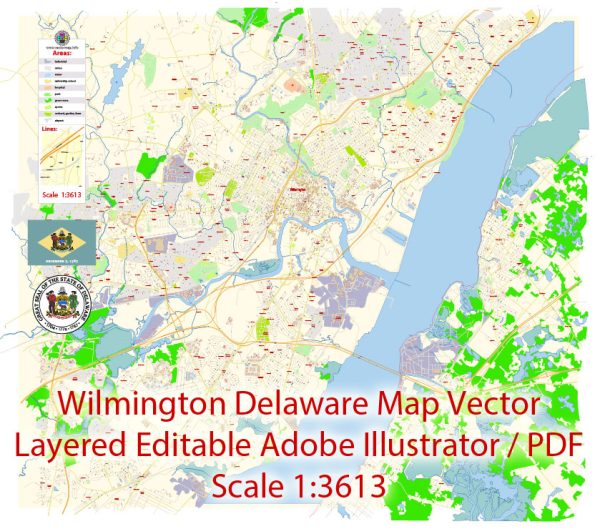Wilmington, Delaware, has a rich history of urban development that reflects the broader trends in American urbanization. Here’s an overview of the city’s urban development history:
- Colonial Era:
- Wilmington’s history dates back to the early 17th century when the area was first settled by the Dutch.
- In 1638, Swedish and Finnish settlers established Fort Christina, the first European settlement in the Delaware Valley. The area changed hands between the Dutch and the English before becoming part of William Penn’s Pennsylvania in 1682.
- Industrialization and Economy:
- In the 19th century, Wilmington experienced significant industrial growth, particularly in the areas of shipbuilding, milling, and manufacturing.
- The city’s economy was closely tied to the DuPont Company, founded in 1802. DuPont played a crucial role in the development of the chemical industry and was a major employer in the region.
- Transportation Hub:
- Wilmington’s strategic location along the Brandywine River and its proximity to major transportation routes contributed to its growth as a transportation hub.
- The completion of the Chesapeake and Delaware Canal in 1829 enhanced the city’s role in trade and transportation.
- Railroads and Development:
- The mid-19th century saw the expansion of railroads, with Wilmington becoming a vital rail hub. The arrival of the railroad facilitated the transportation of goods and people, further boosting economic development.
- Urbanization and Neighborhoods:
- The city’s population increased during the late 19th and early 20th centuries, leading to the development of various neighborhoods.
- The East Side, West Side, and the Quaker Hill neighborhood are examples of areas that developed distinct identities during this period.
- 20th Century Changes:
- Wilmington continued to evolve in the 20th century, with changes in industry and the economy.
- Deindustrialization in the latter half of the century led to economic challenges and changes in the city’s landscape.
- Urban Renewal and Challenges:
- Like many American cities, Wilmington faced challenges in the mid-20th century, including suburbanization, disinvestment, and social issues.
- Urban renewal projects aimed at revitalizing the downtown area led to the construction of new buildings and infrastructure.
- Recent Developments:
- In recent years, there has been a focus on revitalizing downtown Wilmington, with efforts to attract businesses, improve infrastructure, and create a more vibrant urban environment.
- Cultural and Historic Preservation:
- Wilmington boasts a rich cultural and historic heritage, with efforts made to preserve and showcase historic sites and landmarks.
- Challenges and Opportunities:
- Like many cities, Wilmington faces challenges such as economic inequality, crime, and the need for sustainable development. Efforts are ongoing to address these issues and create a more inclusive and thriving urban environment.
Wilmington’s history of urban development reflects the broader trends in American history, from colonial beginnings to industrialization, suburbanization, and contemporary efforts to revitalize urban spaces.


 Author: Kirill Shrayber, Ph.D.
Author: Kirill Shrayber, Ph.D.